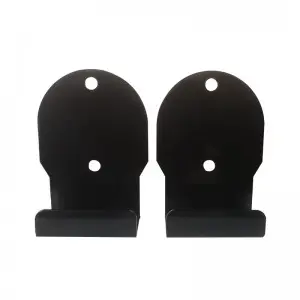****
The cylinder is one of the most fundamental shapes in mathematics and engineering, playing a vital role in numerous applications throughout history. Whether it is found in ancient structures, modern machinery, or in scientific calculations, the cylinder’s unique properties make it an essential geometric form. This article explores the significance of the cylinder, tracing its journey from ancient inventions to contemporary uses, highlighting its invaluable presence across various fields.
At its core, a cylinder is defined as a three-dimensional shape with two parallel circular bases connected by a curved surface. The dimensions of a cylinder are characterized by its height and the radius of its bases, leading to a range of practical applications. The simplicity of its geometric properties allows for complex engineering solutions and innovations, making it a staple in various industrial processes.

Unraveling the Mysteries of the Cylinder: From Ancient Engineering Marvels to Modern Applications in Various Fields
The history of the cylinder dates back to ancient civilizations, particularly the Egyptians and Greeks. The Egyptians used cylindrical shapes in their construction projects, such as columns and obelisks, which served both structural purposes and aesthetic values. The ancient Greeks further honed the design, integrating cylinders into their architecture and art. The Parthenon, for instance, features numerous cylindrical columns that not only provide support but also create a sense of harmony and beauty in the design. Such historical significance highlights the cylinder’s role as a fundamental element of architectural ingenuity.

Unraveling the Mysteries of the Cylinder: From Ancient Engineering Marvels to Modern Applications in Various Fields
As time progressed, the industrial revolution marked a turning point in the use of cylindrical shapes, particularly in machinery. The advent of steam engines, for instance, relied heavily on cylindrical components such as boilers and pistons. These devices were integral to the development of transportation networks, enabling locomotives and ships to navigate through both land and water efficiently. The age of the automobile further expanded the cylinder’s role, with engines, fuel tanks, and even tires taking advantage of its structural advantages.
In the world of mechanics and physics, cylinders are often used to model various physical phenomena. The concepts of pressure and volume in gases are frequently analyzed using the ideal gas law, which often involves cylindrical containers. Cylindrical vessels allow for easier calculations of variables such as pressure and temperature, especially in laboratory settings. For instance, gas cylinders used for storing compressed gases are designed with these principles in mind to ensure safety and efficiency in their function.
Beyond engineering and physics, the cylinder has found a prominent role in daily life. In the culinary world, for example, cylindrical shapes are common in kitchen tools, such as rolling pins and baking pans. The design of cylindrical containers, like jars and cans, also facilitates storage and preservation, making them essential for everyday use. In the age of sustainability, the importance of efficient packaging has led to more innovative uses of cylindrical designs, balancing functionality with environmentally-friendly practices.
In recent years, the realm of technology has further propelled the significance of the cylinder. Advancements in manufacturing methods, such as 3D printing, have allowed for the creation of complex cylindrical structures that were once deemed challenging. These innovations pave the way for the development of new materials and applications, from aerospace components to biomedical devices. Engineers are continually exploring how cylinders can be used to enhance performance and feasibility in high-stakes environments.

Unraveling the Mysteries of the Cylinder: From Ancient Engineering Marvels to Modern Applications in Various Fields
Moreover, the mathematical study of cylinders extends into geometry, calculus, and physics. For students and professionals alike, understanding the properties of cylinders, such as surface area and volume, is crucial in solving real-world problems. Calculating the volume of a cylinder using the formula V = πr²h (where “r” is the radius and “h” is the height) is a skill taught in schools and applied in numerous industries, reinforcing the cylinder’s role as a fundamental concept in mathematics.
In conclusion, the cylinder stands as an enduring symbol of efficiency, elegance, and functionality. From its origins in ancient architecture to its applications in modern technology, the cylindrical shape continues to shape our world. Whether in engineering, science, everyday life, or education, the cylinder remains an integral component of our understanding and innovation, reminding us of its timeless significance across various domains. Understanding its properties and applications can lead to better designs, improved performance in machinery, and even inspired creations in art and technology, ensuring that the cylinder will remain a critical player in shaping the future.
quick lift car lift




